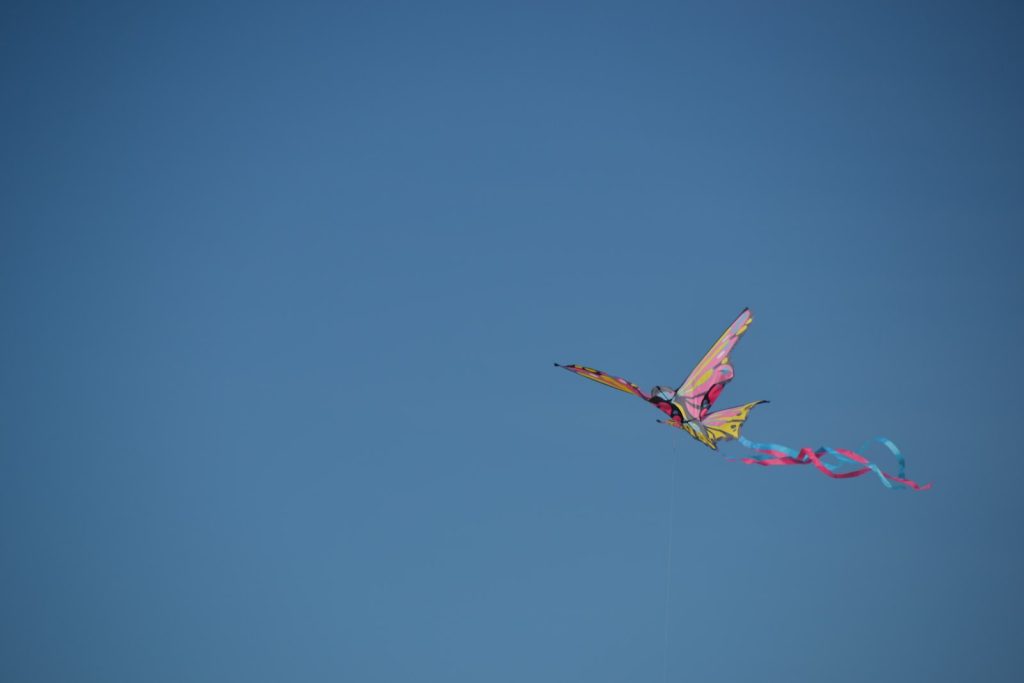Are you seeking a fun and unique way to tap into your creativity? Look no further than kite-making! People of all ages and cultures for centuries have enjoyed this classic activity. It is a great way to exercise your imagination and provides a wonderful opportunity to get outside and enjoy the fresh air. Whether you’re a seasoned kite maker or a beginner, there’s something special about watching your creation take flight against the backdrop of the sky. So, why not unleash your creativity and try your hand at making your own kite? In this blog, we’ll explore the history and art of kite making and provide some tips and tricks for creating your own unique masterpiece. Get ready to soar with us as we explore the world of kite-making!
Kite-Making
Kite-making is an ancient art that people have enjoyed for centuries. The earliest known record of kite flying dates back to China in the 5th century BC, where kites were used for military purposes such as sending messages and measuring distances. Over time, kite making became a beloved pastime for people of all ages and cultures, with designs and materials varying depending on the region and purpose.
Today, kite-making remains a popular activity for people of all ages. It is a fun way to get outside and enjoy the fresh air and a wonderful opportunity to tap into your creativity and imagination. With endless possibilities for designs, colors, and materials, kite making is a great way to express yourself and make something truly unique.
You only need basic materials such as paper or fabric, string, and a frame or support structure to start kite-making. There are many kite designs to choose from, including the classic diamond shape, the more complex delta or box kites, and even unique animal or object shapes.
One of the most satisfying aspects of kite-making is watching your creation take flight. You can learn to control your kite and perform tricks and stunts in the sky with a little practice and patience. Kite flying is a great way to relax and unwind while providing a fun and exciting challenge.
In addition to being a fun activity for individuals and families, kite-making can also be a great way to connect with others in your community. Many cities and towns host kite festivals and competitions, bringing together kite enthusiasts from all over to showcase their creations and enjoy the beauty of the sky.
So why not give kite-making a try? Whether you’re looking for a fun family activity, a new hobby, or a way to express your creativity, kite-making is a rewarding and enjoyable pursuit. So get outside, feel the wind in your hair, and let your imagination soar!
Materials Needed
Kite-making is a fun and creative activity that requires just a few basic materials. The type of materials you need will depend on the design of your kite, but here are some of the most common items you will need to make your own kite:
- Kite paper or fabric: This is the material you will use to make the body of your kite. Kite paper is a lightweight, durable material that is specifically designed for kite making. However, you can also use other lightweight materials like tissue paper, plastic, or ripstop nylon.
- String or kite line: You will need a strong, lightweight string or kite line to attach your kite to the flying handle. Kite line comes in various strengths and materials, including cotton, polyester, and braided spectra. Choose a string or line that is strong enough to support your kite in the air.
- Frame or support structure: Depending on the design of your kite, you may need a frame or support structure to keep the shape of your kite. This can be made from lightweight materials like bamboo and dowels or recycled materials like plastic straws.
- Tail: A tail can help to stabilize your kite and keep it from spinning or twisting in the wind. You can use a variety of materials for your kite tail, such as ribbon, crepe paper, or even plastic bags.
- Glue, tape, and scissors are essential tools for cutting and assembling your kite. You may also need other materials like paint or markers to decorate your kite and add your own personal touch.
When selecting your materials, it’s important to consider the conditions in which you will fly your kite. For example, if you fly in high winds, you may need a stronger string or kite line to stabilize your kite. And if you’re making a kite for a child, you may want to choose a more durable material that can withstand the wear and tear of active play. You can create a beautiful and functional kite with just a few simple materials that will provide hours of fun and enjoyment. So why not give kite-making a try and see what you can create!
Preparing the Kite Frame
Preparing the kite frame is a crucial step in kite making that requires careful attention to detail. The frame of your kite is what gives it its shape and stability in the air, so it’s important to choose the right materials and follow the proper techniques to ensure a successful flight. Here are some steps for preparing the kite frame:
- Choose the right materials: The materials you choose for your kite frame will depend on the type of kite you’re making. Bamboo, dowels, and carbon fiber are common materials used for kite frames, but you can also use other lightweight materials like plastic tubing or wooden skewers.
- Cut the materials to size: Once you’ve chosen your materials, use a saw or sharp knife to cut them to the correct length. Be sure to measure carefully to ensure your kite frame is symmetrical and balanced.
- Sand the edges: To prevent the materials from splintering or breaking, use sandpaper to smooth the edges of the frame pieces. This will also help the pieces fit together more snugly.
- Assemble the frame: Depending on the design of your kite, you may need to use glue or other fasteners to assemble the frame pieces. Be sure to follow the instructions carefully to ensure that your kite frame is sturdy and secure.
- Attach the cross spars: Cross spars are horizontal pieces that help to hold the kite frame in place. Use glue or other fasteners to attach the cross spars to the frame, ensuring they are positioned correctly.
- Tie on the bridle: The bridle is part of the kite that connects the flying line to the frame. Tie the bridle onto the kite frame, making sure that it is centered and evenly balanced.
By following these steps, you can prepare a sturdy and well-balanced kite frame that will help your kite soar through the sky. Remember to take your time and pay attention to the details to ensure a successful flight. With a little practice, you’ll be able to create kite frames that are both functional and beautiful!
Adding Color and Design

Adding color and design to your kite can be a fun and creative process that allows you to personalize your creation and make it truly unique. There are many different ways to add color and design to your kite, depending on your preferences and available materials. Here are some tips for adding color and design to your kite:
- Paint: You can use acrylic or fabric paint to create a design on your kite paper or fabric. Use stencils, brushes, or sponges to apply the paint, and allow it to dry completely before assembling your kite.
- Markers: Permanent markers or fabric markers are another great way to add color and design to your kite. You can use them to draw freehand designs, create patterns, or write messages on your kite.
- Tissue paper: Colored tissue paper can be used to add a vibrant and translucent effect to your kite. Cut out shapes or strips of tissue paper and glue them to your kite paper or fabric, layering them to create interesting patterns and designs.
- Ribbons and streamers: Attach ribbons or streamers to your kite tail to add movement and color to your creation. Use different colors and lengths to create a visually striking effect as your kite flies.
- Decals and stickers: Use adhesive decals or stickers to add designs or messages to your kite. These can be found at craft stores or online and are a simple and easy way to personalize your kite.
When adding color and design to your kite, it’s important to consider the weight of the materials and how they may affect the kite’s flight. Be sure to use lightweight materials and avoid adding too much weight to your kite. With a little creativity and experimentation, you can create a beautiful and unique kite that stands out in the sky!
Attaching Tails and Flying Lines
Attaching tails and flying lines to your kite is the final step in the kite-making process and is crucial to ensuring a successful flight. Tails help to stabilize the kite in the air, while the flying line allows you to control the kite’s movements. Here are some tips for attaching tails and flying lines to your kite:
- Tails: Tails can be made from various lightweight materials, such as ribbon, crepe paper, or plastic. Attach the tails to the bottom of the kite using string or kite line, ensuring they are evenly spaced and balanced. The length and weight of the tails will depend on the size and shape of your kite and the wind conditions. It’s important to experiment with different tail lengths and weights to find the right balance for your kite.
- Flying line: The flying line is what connects your kite to the ground and allows you to control its movements. Use a strong and lightweight kite line, such as braided nylon or Dacron, and tie one end to your kite’s bridle. The other end of the line should be attached to a kite reel or winder, which allows you to spool and control the line as the kite flies. The length of the line will depend on the wind conditions and the size of your kite.
- Wind conditions: Before flying your kite, it’s important to check the wind conditions and choose an appropriate location. Look for an open area with consistent wind, away from trees and power lines. If the wind is too strong, your kite may be difficult to control, while if the wind is too weak, your kite may not be able to stay aloft.
- Launching the kite: Hold it up by the flying line and walk backward, allowing the wind to catch it and lift it into the air. If the kite doesn’t fly immediately, try adjusting the tail or adding more wind to the line. Once the kite is in the air, use the kite reel or winder to control the line and guide the kite’s movements.
Attaching tails and flying lines to your kite can be a bit tricky, but with practice and patience, you’ll be able to launch your kite and enjoy a successful flight. Remember to always fly your kite in a safe and responsible manner, and have fun.
Tips and Tricks
Kite-making can be a fun and rewarding experience, but it can also be a bit challenging, especially if you’re new to the craft. Here are some tips and tricks to help you create a successful and enjoyable kite-making experience:
- Use the right materials: When making a kite, it’s important to use lightweight and durable materials that can withstand wind and other environmental factors. Use materials that are designed specifically for kite making, such as ripstop nylon, bamboo, and fiberglass rods.
- Be patient and take your time: Kite-making requires a bit of patience and attention to detail. Take your time, and don’t rush the process. Make sure each step is done correctly before moving on to the next.
- Use a template or pattern: If you’re new to kite making, it can be helpful to use a template or pattern to ensure that your kite is the right size and shape. You can find templates online or create your own using paper or cardboard.
- Experiment with different designs: Kite-making is a great opportunity to let your creativity shine. Experiment with different colors, shapes, and patterns to create a kite that is uniquely yours.
- Test your kite before adding tails and flying lines: Before adding tails and flying lines, test your kite to make sure it flies properly. If it doesn’t fly correctly, adjust the bridle or try adding more weight to the tail.
- Be mindful of wind conditions: Wind conditions can greatly affect the performance of your kite. Check the wind conditions before flying your kite, and adjust the tail and flying line accordingly.
- Have fun and be safe: Kite-making should be a fun and enjoyable experience. Remember always to fly your kite in a safe and responsible manner, away from power lines and other hazards.
By following these tips and tricks, you can create a beautiful and successful kite that you’ll be proud to fly. So grab your materials and let your creativity soar!
Conclusion: Unleash Creativity
Kite-making is a wonderful way to unleash your creativity and connect with nature. From selecting the right materials to adding tails and flying lines, each step of the kite-making process offers an opportunity to express yourself and explore your imagination. Whether you’re making kites with your family, friends, or on your own, kite making is a fun and engaging activity that can provide hours of enjoyment.
In addition to being a fun activity, kite-making can also have a positive impact on your mental and emotional well-being. Engaging in creative activities like kite-making can reduce stress, increase relaxation, and promote mindfulness. Plus, the sense of accomplishment that comes with creating something with your own hands can boost self-confidence and self-esteem.
So why not give kite-making a try? Whether you’re a seasoned kite maker or a beginner, there’s always something new to learn and discover. So grab your materials, head outside, and let your creativity soar!






























